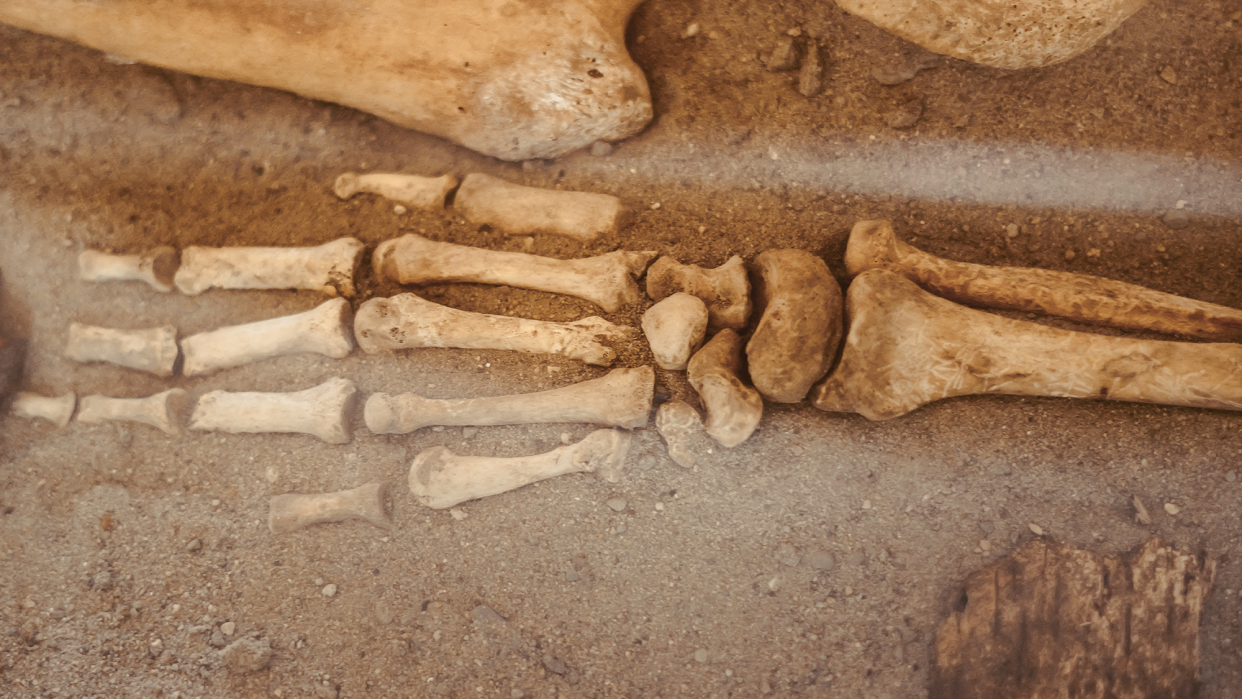Sensitive to pain? It could be your Neanderthal gene variants.

In the years since the Neanderthal genome was first sequenced, geneticists have been peering into the past to look for traces of this extinct group of humans within our genes. The presence of these ancient genes could make carriers more at risk for severe COVID-19, influence nose shape, and even make some people more sensitive to pain.
[Related: Neanderthal genomes reveal family bonds from 54,000 years ago.]
A new study published October 10 in the journal Communications Biology found that those carrying three Neanderthal gene variants are actually more sensitive to pain from skin pricking after prior exposure to mustard oil. In this case, mustard oil acts as an agonist, or a substance that initiates a physiological response. Adding it to the skin causes a quick response by neurons called nociceptors that create a sense of pain.
SCN9A is a key gene in the perception of pain that is located on chromosome 2. It is highly expressed nociceptors that are activated when a sharp point or something hot is applied to the body. The neurons encode proteins within the body’s sodium channel and alert the brain which leads to the perception of pain. Earlier research found three variations in the SCN9A gene–M932L, V991L, and D1908G–in sequenced Neanderthal genomes and reports of greater sensitivity to pain among the living humans who have all three of these variants.
“It has been shown in previous studies that some rare mutations in this gene that stop the channel from working can cause insensitivity to pain,” study co-author and University of Oxford neuroscientist David Bennett tells PopSci. “We were, however, interested in these other mutations, which were shown to have an opposite effect of enhancing the activity of this channel, thus leading their carriers to be somewhat more sensitive than non-carriers.”
According to Andrés Ruiz-Linares, study co-author and University College London human geneticist, earlier studies show that the mutations are quite rare in the British populations, but they are very frequent in Latin American populations.
“We thus realized that we had, in our hands, the perfect dataset to not only replicate their study but also go further and identify the pain modality that was at work here,” Ruiz-Linares tells PopSci.
In the study, the team measured the pain thresholds of 1,963 individuals from Colombia in response to a range of stimuli. The D1908G variant was present in roughly 20 percent of chromosomes within this population. About 30 percent of chromosomes carrying this variant also carried the M932L and V991L variants. All three variants were associated with a lower pain threshold in response to skin pricking after the skin was exposed to mustard oil, but not in response to pressure or heat. Additionally, carrying all three of these variants was associated with greater pain sensitivity than carrying only one of them.
[Related: Neanderthals were likely creating art 57,000 years ago.]
The team then analyzed the genomic region that houses SCN9A using genetic data from 5,971 individuals from Peru, Chile, Brazil, Colombia, and Mexico. They found that the three Neanderthal variants were more common in regions where the population had a higher proportion of Native American ancestry, such as the Peruvian population.
“They [the mutations] have a rather wide range in these countries, from 2 to 42 percent,” study co-author and University College London statistical geneticist Kaustubh Adhikari tells PopSci. “Up to 18 percent of their populations could carry two copies of the mutation. These are, however, gross estimations. We also know, from the previous study, that these mutations are pretty rare in European populations.”
The team believes that the Neanderthal variants may sensitize the sensory neurons by changing the threshold at which a nerve impulse is generated. The variants could also be more common in populations with higher proportions of Native American ancestry due to random chance as well as population bottlenecks that occurred during when the Americas were first colonized by Europeans.
“Although Neanderthal intermixing with Europeans is now well-known in popular culture, their genetic contribution to other human groups, such as Native Americans in this case, is less talked about,” study co-author and population geneticist at the National Research Institute for Agriculture, Food and the Environment in France Pierre Faux tells PopSci. “In this study, we saw how important and relevant it is to study genetic backgrounds that are under-represented in medical cohorts.”
Since acute pain can play a role in moderating behavior and preventing further injury, the team is planning additional research to determine if carrying these variants and having greater sensitivity to pain was advantageous during human evolution. Understanding how these variants work could also help physicians understand and treat chronic pain.
“Genes are just one of many factors, including environment, past experience, and psychological factors, which influence pain,” says Bennet.
